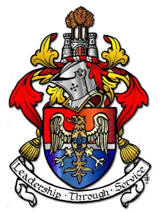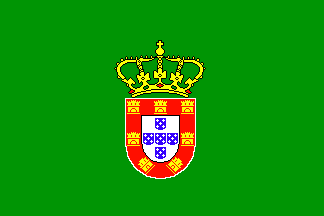| Royal Ancestors from Portugal |
|
|
Royal Ancestors from Portugal INTRODUCTION Until the Middle Ages, the history of Portugal is inseparable from that of Spain, and the Iberian peninsula was a single territorial unit. Present Portugal became part of the Roman province of Lucitania in the 2nd century BC. In the 5th century AD control of the region passed to the Visigoths, and in the 8th century it was included in the area of the Moorish Moslem conquest. In 997 the territory between the Douro and Minho rivers was retaken from the Moors by Bermudo, King of Galicia, and in 1064, the re-conquest was completed as far south as present Coimbra by Ferdinand I, King of Castile and Leon. The re-conquest districts were then organized into a feudal county, composed of Spanish fiefs. The northernmost fief, the Comitatus Portaculensis, extending around the old Roman seaport of Portus Cale later gave Portugal its name. In 1093 Count Henry of Burgundy came to the assistance of Castile when it was invaded by the Moors. In gratitude Alfonso VI of Castile gave Henry the hand of Teresa, the kings illegitimate daughter, and, as part of her dowry, the County of Portugal. At the death of Alfonso in 1109, Count Henry refused to continue feudal allegiance to Castile. He invaded Leon and began a series of peninsular wars that, continued by Henryís son, Alfonso Henriques, later Alfonso I, made Portugal independent. In addition, Alfonso, a brilliant general, defeated the Moors in the south in the battle of Ourique. The Portuguese knights accepted him as king in 1143, and in 1179 Pope Alexander III recognized the royal title and the independence of the kingdom of Portugal. Intermittent wars against Castile and the Moors occupied the successors of Alfonso for about two centuries thereafter, but the internal development of the kingdom progressed materially. Under Alfonso III Algrave, the extreme south, was added to the kingdom and Portugal reached its present limits. Diniz, son of Alfonso III, began a policy of encouraging agricultural and commercial enterprise which laid the foundation of Portuguese wealth. In 1294 Diniz signed a commercial treaty with Edward I of England, beginning a sequence of alliances between the two countries. In 1340, under Alfonso IV, the Portuguese, temporarily allied with Castile, decisively defeated the Moors in the battle of Salado. The last of the legitimate descendants of Henry of Burgundy was Ferdinand I, the grandson of Alfonso IV. After the death of Ferdinand, his illegitimate half brother John I secured the Portuguese throne in 1385, after two years of civil war. his branch of the Burgundian line became known as the House of Aviz, John having been grand master of the knightly order of that name. Johnís reign was one of the most notable in Portuguese history. He successfully defended the kingdom against Castilina attack in 1385 defeating Castile decisively in the battle of Aljubarrota. In 1386 England and Portugal allied themselves permanently by the Treaty of Windsor, and John married Philippa, daughter of John of Gaunt. However, the greatest measure of Johnís reign rests less upon the kingís strong and able administration than upon the work done under the direction of his son, Prince Henry the Navigator in exploring the African coast in order to find an eastward route to the Indies. A century of exploration and conquest began which made Portugal one of the greatest colonial powers in the world. In 1418-1419 Portuguese navigators explored Madeira and in 1427 discovered the Azores. A successful Portuguese military campaign in Morocco resulted in the capture of Ceuta in 1415, followed by the acquisition of about half of Morocco. The work of Prince Henryís sea captains and their successors led to the institution of a planned system of exploration. During the 16th century Portugal began to decline in commercial and political importance. A prime factor in the decay of Portuguese affairs was the expulsion, in 1496, of the Jews, depriving the kingdom of much of its middle class and exiling many of its most educated and capable citizens. The Inquisition was established in 1536 and its religious tyranny extended even to the colonies. In addition, the decadence and luxury of the Portuguese nobility gave rise to social suppression, weakening the spirit of nationalism which had characterized the previous century. The death of John III in 1557 made his grandson, Dom Sebastian, a child of three, king under a regency headed by Johnís brother, Cardinal Henry. Influenced by the Jesuits to organize a crusade against the Moors, Sebastian invaded North Africa in 1578 and was defeated and killed at the battle of Alcazar-Quivir on August 4, 1578. The throne of the weakened kingdom was inherited by Cardinal Henry, who died in 1580 leaving no heirs and ending the House of Aviz. Seven claimants disputed the succession to the throne. The most powerful was Philip II of Spain, whose grandfather had been Manuel I of Portugal. A Spanish army invaded Portugal and on August 25, 1580, decisively defeated the forces of Philipís rivals. The Spanish king became Philip I of Portugal. The annexation of Portugal to the Spanish monarchy subjected it to Philipís tyranny and the heavy expenses of Spanish wars in a period known as the Sixty Years Captivity. After the defeat of the Spanish armada by England in 1588 and the subsequent loss of Spanish prestige, the Portuguese colonial empire fell apart under the repeated assaults of England, France, and the Netherlands. Portuguese discontent with Spain, which ruled the country as a minor Spanish province, climaxed in 1640. Taking advantage of a revolt in Catalonia which occupied Spain at the time, Portuguese conspirators, with the support of France, regained the independence of their kingdom. John, Duke of Braganza, was elected John IV, first king of the House of Braganza which ruled Portugal thenceforth as long as the monarch ruled.
Portugal
|

